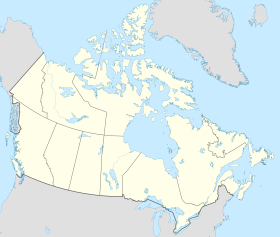
Back Ontario Afrikaans ኦንቴሪዮ Amharic Ontario AN Ontario ANG أونتاريو Arabic ܐܘܢܛܐܪܝܘ ARC اونتاريو ARZ Ontario AST Ontario ATJ ओण्टारियो AWA
Ontario | |
|---|---|
| Motto(s): | |
| Coordinates: 49°15′00″N 84°30′00″W / 49.25000°N 84.50000°W | |
| Country | Canada |
| Confederation | July 1, 1867 (1st, with Quebec, Nova Scotia, New Brunswick) |
| Largest city | Toronto |
| Largest metro | Greater Toronto Area |
| Government | |
| • Type | Constitutional monarchy |
| • Body | Government of Ontario |
| • Lieutenant Governor | Edith Dumont |
| • Premier | Doug Ford (PC) |
| Legislature | Legislative Assembly of Ontario |
| Federal representation | Parliament of Canada |
| House seats | 121 of 338 (35.8%) |
| Senate seats | 24 of 105 (22.9%) |
| Area | |
| • Total | 1,076,395 km2 (415,598 sq mi) |
| • Land | 917,741 km2 (354,342 sq mi) |
| • Water | 158,654 km2 (61,257 sq mi) 14.7% |
| • Rank | Ranked 4th |
| 10.8% of Canada | |
| Population (2016) | |
| • Total | 13,448,494 [1] |
| • Estimate (2020 Q4) | 14,733,119 [3] |
| • Rank | Ranked 1st |
| • Density | 14.65/km2 (37.9/sq mi) |
| Demonym | Ontarian[4] |
| Official languages | English (de facto)[5] |
| GDP | |
| • Rank | 1st |
| • Total (2015) | CA$763.276 billion[6] |
| • Per capita | CA$59,879 (7th) |
| HDI | |
| • HDI (2018) | 0.929[7] — Very high (3rd) |
| Time zones | |
| East of 90th meridian west | UTC-05:00 (EST) |
| • Summer (DST) | UTC-04:00 (EDT) |
| West of 90th meridian west, except Atikokan and Pickle Lake | UTC-06:00 (CST) |
| • Summer (DST) | UTC-05:00 (CDT) |
| Atikokan and Pickle Lake (No DST) | UTC-05:00 (EST) |
| Postal abbr. | ON |
| Postal code prefix | |
| ISO 3166 code | CA-ON |
| Flower | White trillium |
| Tree | Eastern white pine |
| Bird | Common loon |
| Rankings include all provinces and territories | |
Ontario is a province of Canada. It is in the eastern half of Canada, between Manitoba and Quebec. Ontario has the most people of any province, with 13,150,000 in 2009, and is home to the biggest city in Canada, Toronto, which is also the capital of the province.
Ontario also has the second largest land area, with 1,076,395 km²; only Quebec is larger by size. (Nunavut and Northwest Territories are also larger, but are called territories and not provinces). The province has one of the longest borders with the United States and there are several border crossings including the one at Niagara Falls. Along this border are 4 large lakes called Lake Ontario, Lake Erie, Lake Huron, and Lake Superior. They each are partly in Ontario and partly in the United States, and the border runs through them, but not Lake Michigan, which is entirely in the United States. These five lakes are together are called the Great Lakes.
There are a number of symbols that represent the province of Ontario. The flag is red with the British Union Jack in the top left corner and the provincial shield is on the right hand side of the flag. The provincial bird is the loon, and the provincial flower is the trillium. It has three flower petals and it is usually white but some times is pink or purple.
- ↑ "Population and dwelling counts, for Canada, provinces and territories, 2016 and 2011 censuses". Statistics Canada. February 6, 2017. Archived from the original on February 11, 2017. Retrieved February 8, 2017.
- ↑ "Land and freshwater area, by province and territory". Statistics Canada. February 1, 2005. Archived from the original on October 19, 2012. Retrieved August 5, 2012.
- ↑ "Population estimates, quarterly". Statistics Canada. June 14, 2018. Retrieved April 12, 2020.
- ↑ "Definition of Ontarian". Collins Online Dictionary. HarperCollins Publishers. Archived from the original on 2013-10-04. Retrieved 2013-10-03.
- ↑ "About Ontario". Ontario.ca. Queen's Printer for Ontario. 2019-03-07. Archived from the original on 2020-01-08. Retrieved 2020-01-08.
- ↑ "Gross domestic product, expenditure-based, by province and territory (2015)". Statistics Canada. November 9, 2016. Archived from the original on September 19, 2012. Retrieved January 26, 2017.
- ↑ "Sub-national HDI - Subnational HDI - Global Data Lab". globaldatalab.org. Retrieved 2020-06-18.


